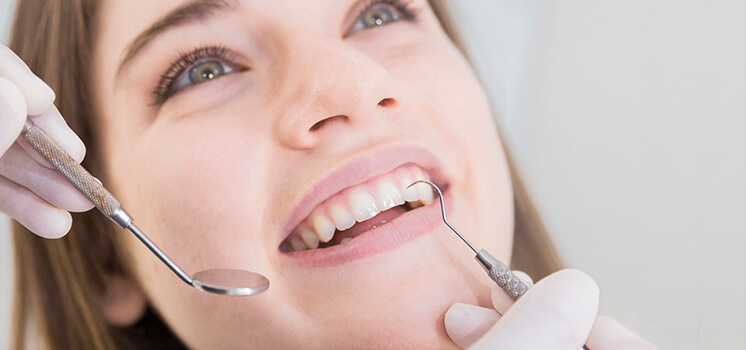Orthodontic Dentistry

Orthodontia, also called orthodontics and dentofacial orthopedics, is a specialty of dentistry that deals with the diagnosis, prevention and correction of malpositioned teeth and jaws. The field was established by such pioneering orthodontists as Edward Angle and Norman William Kingsley.
Typically treatment for malocclusion can take 1 to 2 years to complete, with braces being altered slightly every 4 to 8 weeks by the orthodontist.[13] There are multiple methods for adjusting malocclusion, depending on the needs of the individual patient. In growing patients there are more options for treating skeletal discrepancies, either promoting or restricting growth using functional appliances, orthodontic headgear or a reverse pull facemask. Most orthodontic work is started during the early permanent dentition stage before skeletal growth is completed. If skeletal growth has completed, orthognathic surgery can be an option. Extraction of teeth can be required in some cases to aid the orthodontic treatment. Starting the treatment process for overjets and prominent upper teeth in children rather than waiting until the child has reached adolescence has been shown to reduce damage to the lateral and central incisors. However the treatment outcome does not differ.
There are three steps in an orthodontist’s education: college, dental school, and orthodontic school.
Similar to becoming a medical specialist, such as a surgeon or an internist, orthodontists complete orthodontic residency program for two to three years after dental school. There are more people who apply for orthodontic residencies than there are residencies available. In fact, there are about 15 applications for every opening.
While there’s some instruction regarding orthodontics in dental school, it is minimal. It’s in the orthodontic residency program that orthodontists receives intensive instruction to learn proper, safe tooth movement (orthodontics) and the guidance of dental, jaw and facial development (dentofacial orthopedics). These extra years of schooling make the orthodontist the dental specialist in moving teeth and aligning jaws. This is the only focus of their practice.
You can refer to an orthodontist as:
- An orthodontist
- An orthodontic specialist
- An orthodontic and dentofacial orthopedis
Orthodontists diagnose, prevent, intercept and treat dental and facial irregularities.
These problems may include teeth that are crowded or too far apart, teeth that meet abnormally or don’t meet at all, teeth that stick out, and mismatched jaws. Orthodontists treat existing problems, and can identify problems that are developing, and take timely action to resolve problems before they fully develops. Orthodontists treat patients of all ages, they regularly treat children, adolescents and adults.
Orthodontists treat patients of all ages, they regularly treat children, adolescents and adults.
Orthodontists create a custom treatment plan for each patient. Every patient is different. Orthodontists use in-person exams as well as 2D or 3D xrays, photos and molds of the teeth to create a personalized treatment plan for each and every patient.
Orthodontists use the full range of “appliances” to correct orthodontic problems. The “appliance” is the term used for the device that moves teeth. It can be traditional braces, clear aligners or braces on the inside of the teeth. The orthodontist is uniquely qualified to recommend the most appropriate type of “appliance” to correct an individual’s problem.
The American Association of Orthodontists (AAO) is open exclusively to orthodontists – only orthodontists are admitted for membership. The only doctors who can call themselves orthodontists have graduated from dental school and then successfully completed the additional two-tothree years of education in an accredited orthodontic residency program.
You may have noticed that we specialize in orthodontics and dentofacial orthopedics. And while most people we talk to have heard of orthodontics, many are confused by the dentofacial orthopedics part of the title. Today, Dr. Gary Benson and our team thought we would explain the difference.
While orthodontics entails the management of tooth movement, dentofacial orthopedics involves the guidance of facial growth and facial development, which occurs for the most part during childhood, and is a reason why kids are often the best candidates for receiving dentofacial orthopedic therapy. Dr. Gary Benson will examine and monitor your child’s growth to determine when starting treatment will be most effective. If your child begins orthodontic treatment before his or her adult teeth have erupted, it is known as Phase-One treatment. During this phase, Dr. Gary Benson will use treatments designed to correct your child’s jaw growth and make sure that the jaw bone is properly aligned before beginning the next phase of treatment, which usually involves placing braces to straighten your child's teeth.
Dentofacial orthopedics is also used to treat adult patients at Benson Orthodontics, however, this process may involve surgery. With our younger patients, we know the jaw bones are still forming, making it easier for our team at Benson Orthodontics to control bone growth and tooth movement. Adults, however, are a different story; their bones are no longer growing, and their jaw bones have hardened, so it is more difficult to adjust the bite and move teeth into proper alignment. Dr. Gary Benson may recommend surgery to adjust the jaw bone and establish the proper bite alignment before beginning treatment.
Because our team at Benson Orthodontics is skilled in both areas, we are able to diagnose any misalignments in the teeth and jaw as well as the facial structure, and can devise a treatment plan that integrates both orthodontic and dentofacial orthopedic treatments.
We hope that helps! To learn more about dentofacial orthopedics, and to find out if this type of treatment is right for you, please contact our Denver Colorado office and schedule an initial consultation for you or your child. It’s never too late to get a great smile, and we can’t wait to help you or your child get started.
Dental Specialties


